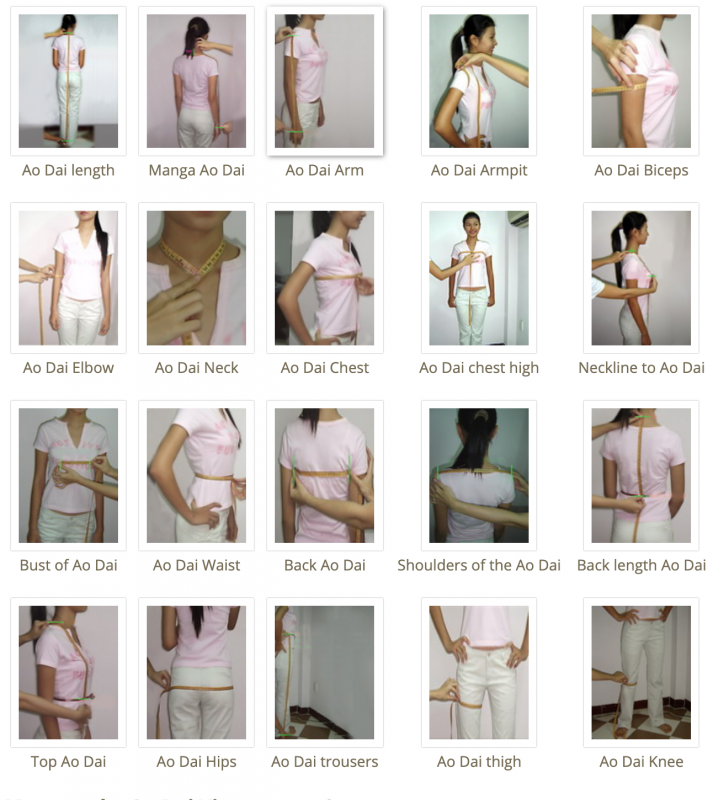Ao Dai has long been a traditional costume and a typical cultural feature of the Vietnamese nation. Through each period of development of history, Ao Dai is constantly changing but still respecting the conventional gentle beauty of Vietnamese women. It has become the hallmark of the Vietnamese fashion industry and political and cultural identity since it began to emerge under the Nguyen Dynasty.
What is ao dai ?
The ao dai is the national costume of Vietnam for women. Vietnamese wear ao dai for formal occasions, at school or for work. The male counterpart to the ao dai is called an ao gam. The ao dai is found in every part of Vietnam, and in overseas Vietnamese communities. The prefix áo classifies the item as clothing. Dài means "long." Once condemned as decadent by the country's rulers, the dress became popular again in the 1990s.
A modern ao dai has two parts, a high collared long dress, and pants that stop at the ankles. Costume and evening-gown áo dài may have colorful designs with flowers, birds, and pictures.
Parts of dress
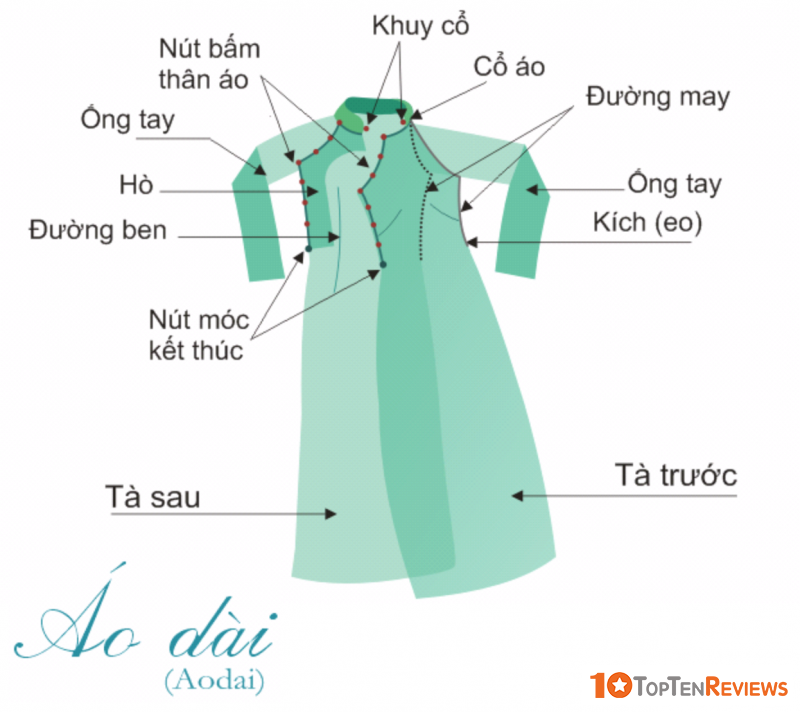
Tà sau: back flap
- Nút bấm thân áo: hooks used as fasteners and holes
- Ống tay: sleeve
- Đường bên: inside seam
- Nút móc kết thúc: main hook and hole
Tà trước: front flap
- Khuy cổ: collar button
- Cổ áo: collar
- Đường may: seam
- Kích (eo): waist
Ao Giao Linh (Áo Giao Lĩnh)
No researchers have been able to accurately determine the history of Ao Dai and the time of its appearance. According to the perception of the Chinese, the Ao Dai comes from the cheongsam. Still, the cheongsam appeared in 1920, and the Ao Dai appeared thousands of years ago.
The appearance of the Ao Dai originates from the Ao Dai (in 1744) - the most primitive style of the Vietnamese Ao Dai. The shirt is also known as the front shirt, is sewn wide, slits on both sides, wide wrists, long body dot the heel. The shirt's body is sewn with 4 fabrics combined with a colored belt and a black skirt. This is a cross-collar shirt similar to a four-piece shirt.
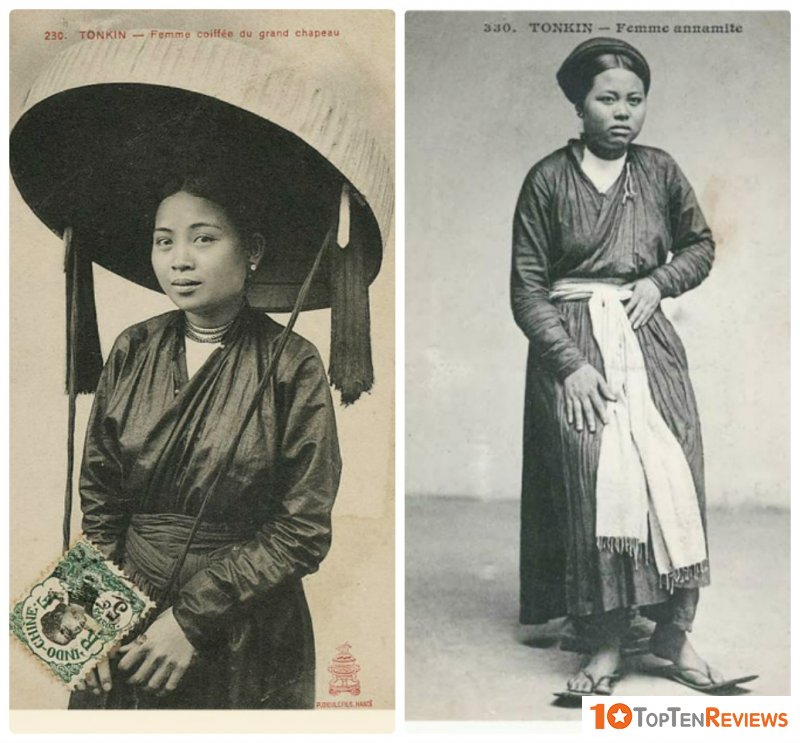
At this time, King Nguyen Phuc Khoat ascended the throne and ruled the southern land. The North is led by Lord Trinh in Hanoi. The people here wear the uniform of the lord, and the costume has similarities with the Han people. To distinguish between the South and the North, King Nguyen Phuc Khoat asked all his assistants to wear long pants under a silk shirt. This dress is a combination of Han and Champa costumes. Maybe this is the picture of the first ao dai.
Ao Dai Tu Than ( Áo dài Tứ thân - 17th century)
According to researchers and artifacts at the Ao Dai museum, Ao Giao Linh has been modified to make it more convenient for women to work and produce. The two front flaps of the shirt are sewn apart to tie together, the two back flaps sewn together to form a lapel.
This type of shirt is often seen in dark colors, which is considered a rustic and modest shirt that symbolizes the 4 births of the couple.
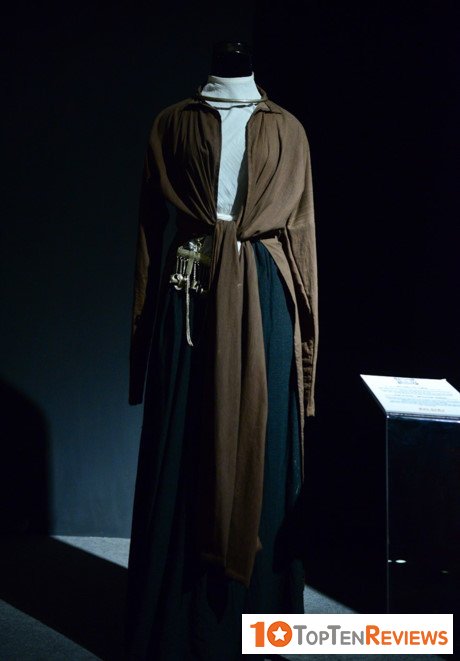
Ao Dai Ngu Than (Áo dài Ngũ thân - King Gia Long's reign)
Based on the four-body robe, in the reign of King Gia Long, the five-body shirt appeared. This type of shirt is often sewn with a small flap to symbolize the wearer's status in society. The aristocratic mandarin class often wore a five-body dress to distinguish it from the working classes in society.
The shirt has 4 flaps sewn into 2 flaps like ao dai. On the front flap, there is an extra flap as a discreet lining which is the 5th lap. This shirt style is sewn in a broad form, has a collar, and is very popular to the beginning of the twentieth century.
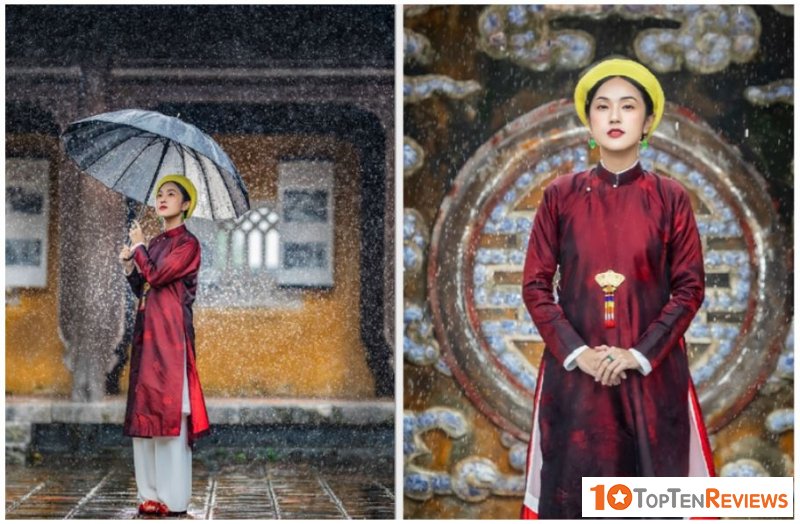
Ao Dai Lemur
This shirt style is modified from the five-body shirt created by artist Cat Tuong in 1939. Lemur Ao Dai is named after her French name. The shirt has only two front and back flaps; the front flap is long, The shirt is sewn close to the body, the sleeves are straight, and the hem is slight. Buttons were opened to the side to emphasize femininity. This style of shirt was widespread until 1943 when it was forgotten.
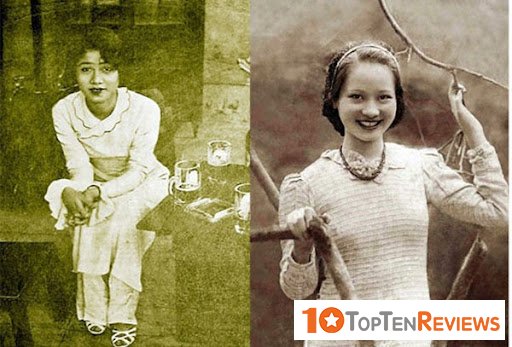
Ao Dai Le Pho (Áo dài Lê Phổ)
This is also a new combination from the four-body dress, a variation of the Lemur Ao Dai by painter Le Pho, called Le Pho Ao Dai.
She reduced the size of the ao dai to fit the body of a Vietnamese woman, pushed the shoulder bridge, stretched the hem of the dress to touch the ground, and brought many new colors. In other words, she made it sexier, more sophisticated, and more attractive.
After four years of popularity, the "ao dai lemur," painted by painter Le Pho, removed all Western influences and replaced them with details from the four-body dress. From this time to the 1950s, the Vietnamese Ao Dai style became highly famous in the country's tradition.
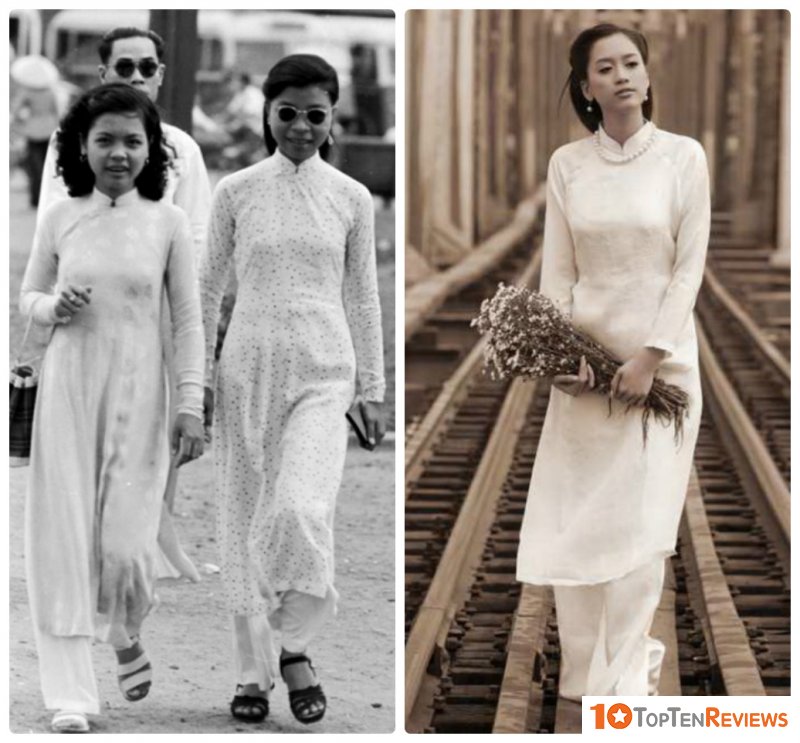
Ao Dai Raglan
Ao Dai Raglan, also known as Jack Lang Ao Dai, appeared in 1960, created by Dung tailor in Dakao, Saigon.
The most significant difference of the Raglan Ao Dai is that the shirt hugs the body more tightly, connecting the arms from the diagonal neck down to a 45-degree angle. This helps the wearer to be more comfortable and flexible.
The two flaps are connected by a row of buttons on the side. This is the style of Ao Dai that contributes to shaping the fashion of Vietnamese Ao Dai in the future.
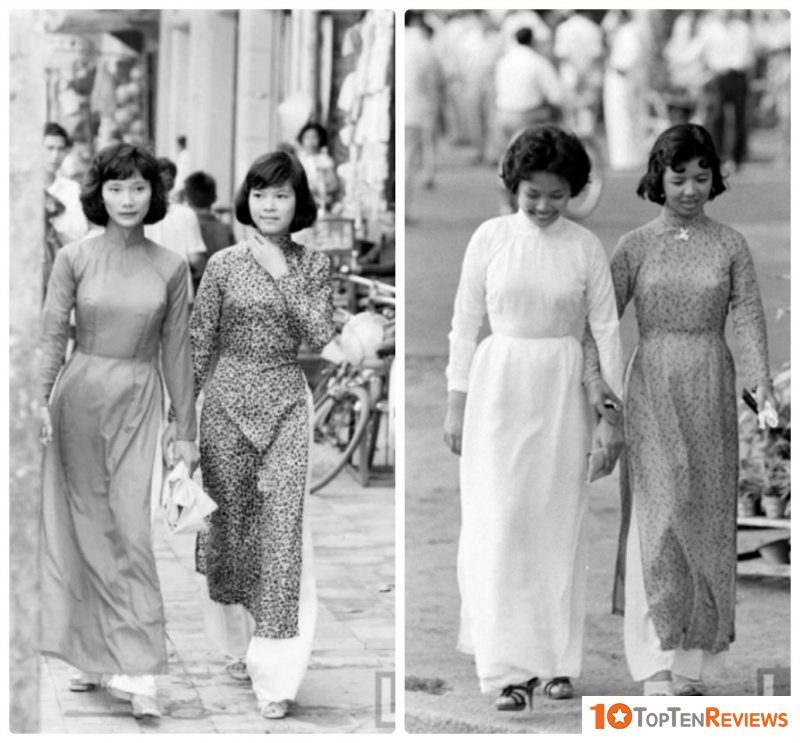
Traditional Vietnamese Ao Dai (from 1970 to present)
Vietnamese ao dai has changed over the years with many designs and materials, from modern to disruptive. The Ao Dai is also transformed into a wedding dress, an innovative dress. But no matter what, the traditional ao dai of Vietnamese women still retains a relaxed, sexy, and discreet look that no other outfit can bring.
Along with modern lifestyles' dynamic and changing trends, the traditional Ao Dai is stylized by designers with shorter skirts, changes in the collar, sleeves, or even the shirt or pants. Ao Dai gives Vietnamese women many choices.
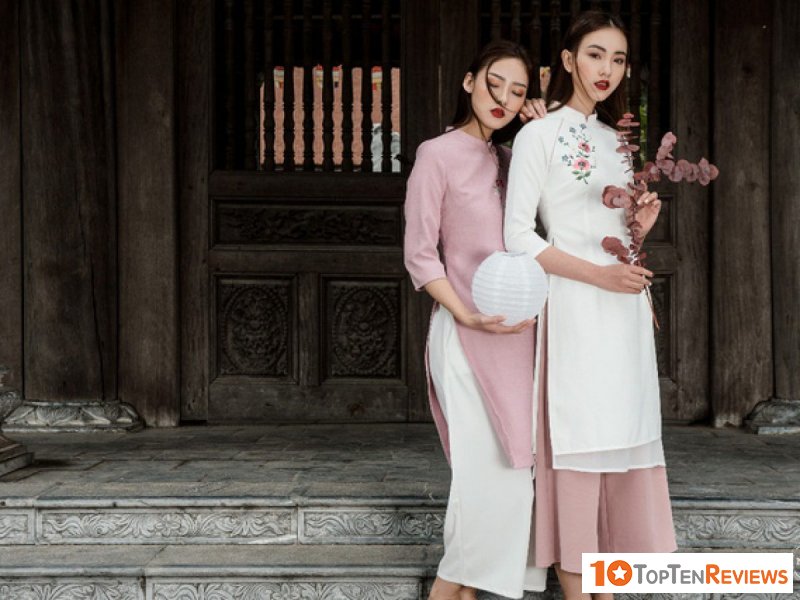
It is also because of this stylization that Vietnamese women wear Ao Dai more and more daily. You can see colorful Ao Dai with many new and unique designs in offices, sacred temples, or even when walking outside.
With such a long history of development, the Vietnamese Ao Dai has become more complete than ever. Ao Dai has become a symbol of culture, exalting the beauty of Vietnamese women.
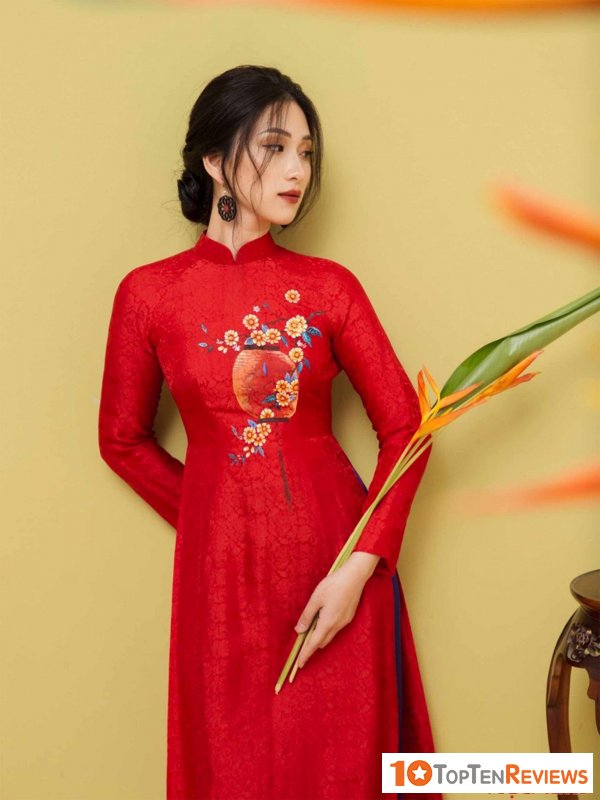
It can be said that the Ao Dai is not only an outfit representing an entire culture but also a constant inspiration of Vietnamese art.
Measures for a Vietnamese Dress
To make our own costume Vietnamese Ao Dai have to take the following measures:
- Dress length: must measure from neck to ankle.
- Sleeve: measure from the nape to the wrist.
- Arm: measure from the shoulder to the wrist.
- Armpit: measure the diameter of the armpit.
- Bicep: measured diameter at the height of the biceps.
- Elbow: measure the diameter of the arm to the elbow.
- Neck: measure the neck diameter.
- Chest: measure the circumference of the chest.
- Upper Bust: measure the contour of the breast, by the top of the bust.
- Neck: measure from neck to chest by the height of the nipple.
- Bust: measure distance between the breasts at nipple height.
- Waist: measure the circumference of the waist.
- Back: measure width of back using the distance between armpits.
- Shoulder: measure distance between shoulders.
- Back Length: measure distance from the neck to the waist.
- Top part: measure distance from neck to waist.
- Hips: measure hips diameter.
- Trousers: measure from the waist to the floor.
- Thigh: measure the contour of the thigh.
- Knee: measure diameter of the knee.
How to take measurement for a Vietnamese Dress Ao Dai step by step
We show graphically how to take action to make a Vietnamese Ao Dai dress.
